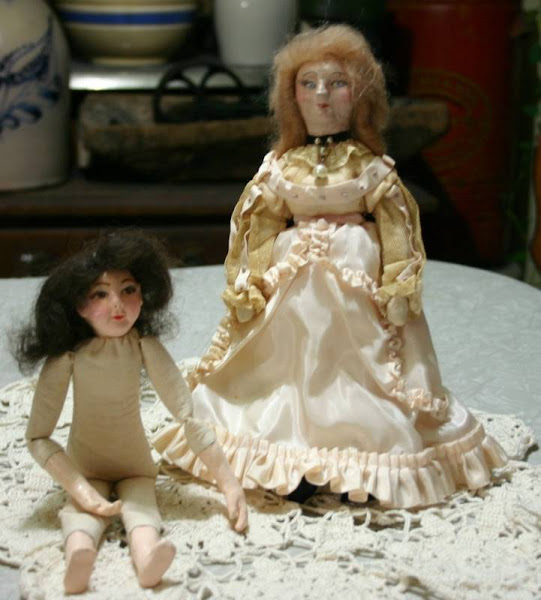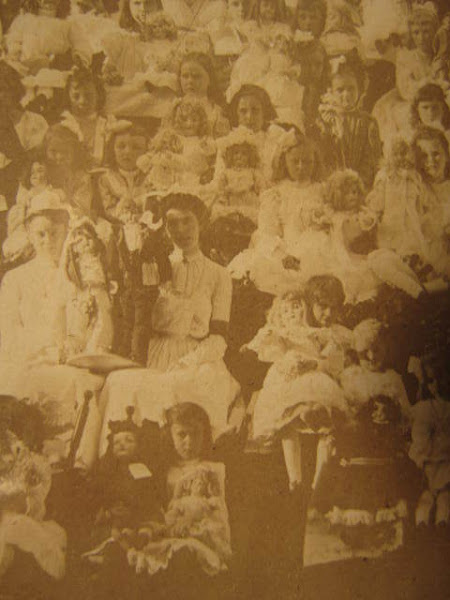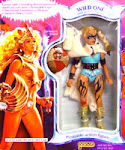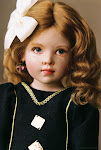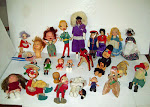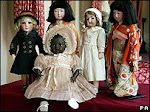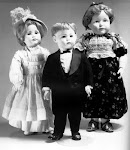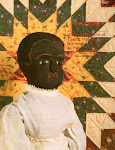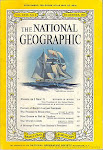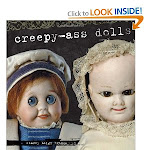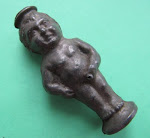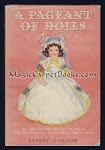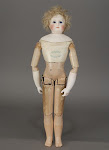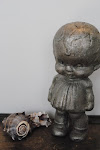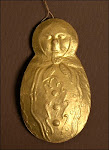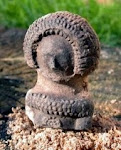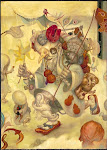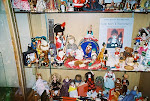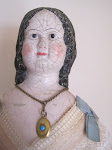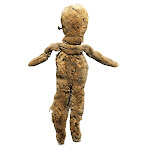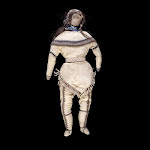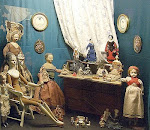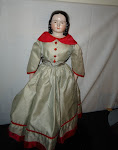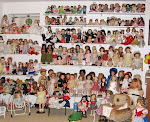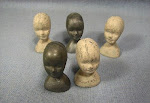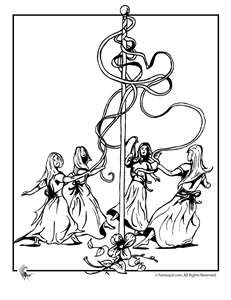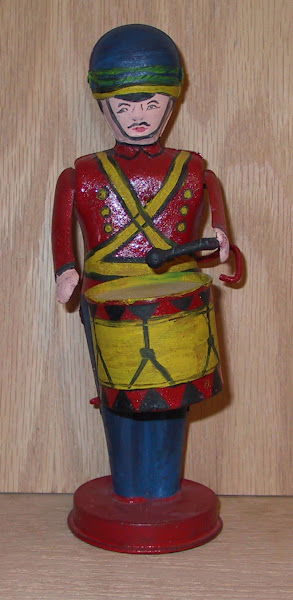Monday, April 30, 2012
DOLLS BLOG by Linda Walsh Originals: How-To Order Guide For My New Linda Walsh Original...
DOLLS BLOG by Linda Walsh Originals: How-To Order Guide For My New Linda Walsh Original...: In March in a DOLLS Blog post entitled, " My NEW Linda Walsh Originals Dolls and Linda Walsh Originals E-Patterns Websites " I told you t...
Dolls and Computer
How do you use computers in your collecting? I'd like to hear from my readers on this. I will blog your most intereseting response, and may award a small prize, who knows?
I lvoe my blog, and have used computers over the years to look for paper dolls, for research and writing, for compiling illustrations for source books and for scrapbooks. I used them for social networking, and for researching, filing papers, getting ideas for my brick/mortar museum on dolls. I use Facebook to promote the blogs, same for Twitter. I keep in touch with friends and other collectors and often write to them looking for information. I like to read other blogs and to subscribe/contribute to online newsletters, and to follow museums like the Strong National Museum of Play on the Web. How do you use computers for your doll collections?
In Honor of Mary Hillier
The birthday of my friend and noted doll author and historian Mary Palmer Hillier was April 30th. Mary died in 1999, on Valentine's Day at the age of 82. She was a very young 82 and she loved Elvis and soccer, as well as dolls and toys. Her board games and Noahs' ark collections were legendary. She was a noted authority on all types of dolls and doll related objects and she explored the history of dolls in every aspect of society. She helped me tremendously with my book and dissertation on English writer Barbara Pym, and with articles on Metal Dolls/Automatons and the ensuing book. We wrote about twice a month to each other for 14 years until her death. Mary worked for Pollock's Toy Museum and was Editor of their Dictionary of Toys. She also wrote a book on Chloe Preston, published right before she died, Wax Dolls, Automata, Dolls and Dollmkaers, and many, many articles on dolls and toys. She was quite an authority, and her husband Jack was an expert on oriental and Japanese prints. I used to do research for her on The Internet, and looked up Louise Norton Brown for Jack. I miss her everyday, and always think of her saying, "Almost a May Queen!"
Tuesday, April 24, 2012
Doll Museum: Not Chronological, but Great Lit often is not! Som...
Doll Museum: Not Chronological, but Great Lit often is not! Som...: Perkins booko nt he subject is excellent, as is Laura Starr's. I also bought a book on African Myth that is illustrated by art, including s...
Monday, April 23, 2012
Doll Museum: Mannekin Pis of Brussels
Doll Museum: Mannekin Pis of Brussels: On this St. George's Day, the anniversary of the death's of Cervantes, Shakespeare and Joyce, I would like to write about Mannekin Pis of Br...
Thursday, April 19, 2012
Arthritic Collectors
Mine is getting worse everywhere; my typing should show that! See below from about.com:
Arthritis and Doll Collecting
Changes, Products and Strategies for Collectors Affected by Arthritis
By Denise Van Patten, About.com Guide
.See More About:arthritissewing for dollscleaning for dollsbuying and selling dolls online
Ads
Nopal Ultra | Vitonomy
Naturally Reduce Inflammation With Our Anti-Inflammatory Vitamins
vitonomy.com/nopal-antiinflammatory
Stop Arthritis Pain
Its easier than you think! You wont belive how fast this works
PainReliefLiving.com
Local Collectible Shops
Search For Collectors Shops By Location At Local.com!
Local.com
Doll Collecting Ads
•Barbie Doll
•Doll Collector
•Doll Patterns
•Arthritis Joint Pain
•Rheumatoid Arthritis
Ads
Osteoarthritis Finger
Mothers--Help Your Daughter With Osteoarthritis Finger--Act Now!
Www.osteoarthritisadvice.com
Rheumatoid Arthritis Pictures
Suffering From RA? Learn The Five Things Your Dr Isnt Telling You!
ArthritisJointRegain.com
Recently, I was diagnosed with Rheumatoid Arthritis. If you are a fellow sufferer of any form of arthritis (rheumatoid, osteoarthrits, or any of the other over one hundred forms of arthritis) , you know how arthritis can affect nearly all of your activities, especially if your hands or any joints in your arms are affected.
If you are a doll collector, simple tasks that you used to accomplish without thought become more difficult due to the arthritis. For instance, sewing costuming for your dolls, either by hand or machine can be affected, as can repair of doll clothing. Cleaning and maintaining your doll collection also may require special strategies; even going on the computer to research, buy and sell dolls. Lifting and managing heavier dolls can be a nightmare, which affects the ability to display and manage a collection. This article will provide some strategies and product ideas that can help you if this is your situation or the situation of a fellow collector, family member, or doll club member. This article does not provide medical strategies or help, for that, please visit Carol Eustice's wonderful and comprehensive site on Arthritis and Joint Conditions.
Doll Research, Buying and Selling on the Computer
Typing on a computer can be painful if you have arthritis, and it can also aggravate your arthritis symptoms in your hands arms, and even legs if you are not sitting right. The number one thing you need to do when doll surfing on your computer is be sure that you have an ergonomic setup at your keyboard, with particular attention paid to the position of your hands and wrists. Additionally, I have found Imak Arthritis Gloves to be wonderful to wear while on my computer, especially during a flare-up. These gloves offer mild, soothing compression and warmth, while leaving the fingertips open to type freely. Another simple thing you can do is to take frequent breaks to prevent stiffness from setting into your joints (you can use the breaks to get up and enjoy your dolls!).
Sewing for Dolls and Arthritis
One of the most frustrating things I've had to deal with from my Rheumatoid Arthrisis has been difficulty in sewing for my dolls and also doing needlework, such as Victorian Ribbonwork, which is one of my specialities. Formerly simple actions like threading a needle are more complicated now. Luckily, there are tools and products that can help with many sewing problems as well. For instance, I now use a Clover Needle Threader. There are many other needle threading devices available; if you are lucky enough to have a fabric store near you, you can visit the store and try several out to see which one works best for you; if not, many are available online.
Scissors Recommended by the Arthritis Foundation
Another difficulty in doing sewing and needlework for dolls may come from operating scissors for cutting of fabrics, trims, and threads. There are several specialty scissors available, but my favorite one is a Fiskars Scissor that is recommended by the Arhtritis Foundation. This scissor cuts with very little pressure and is easy on the hands.
Cleaning and Maintaining Your Doll Collection if you Have Arthritis
Cleaning and Maintaining your doll collection requires dexterity and strength--which can sometimes be in short supply if you are struggling with Arthritis on a day to day basis. Again, there are tools and strategies that can help with this. For instance, dust is the nemesis of most doll collectors, but gripping cloths and dusters can be difficult for arthritis patients. If so, I recommend dusting gloves! You slip them on your hands, and you can dust with no gripping needed at all. For moving heavy dolls, plan to have a family member or friend help.
Do You Have Other Solutions and Strategies You Use?
If you have other solutions or strategies you use to cope with arthritis or other mobility or medical issues that affect your collecting, please let us know in the comments to this article blog!
New posts to the Doll Collecting forums:
•mickey mouse
•28" Bradley style doll
•Old Cloth Doll Identification Lenci?
Doll Collecting Guide: Information for Doll Collectors
•Dolls, Collecting, and Popular Culture
•Huguette Clark - Heiress, Mystery, Doll Collector
•Top Reasons To Not Smoke Around Your Dolls
Arthritis and Doll Collecting
Changes, Products and Strategies for Collectors Affected by Arthritis
By Denise Van Patten, About.com Guide
.See More About:arthritissewing for dollscleaning for dollsbuying and selling dolls online
Ads
Nopal Ultra | Vitonomy
Naturally Reduce Inflammation With Our Anti-Inflammatory Vitamins
vitonomy.com/nopal-antiinflammatory
Stop Arthritis Pain
Its easier than you think! You wont belive how fast this works
PainReliefLiving.com
Local Collectible Shops
Search For Collectors Shops By Location At Local.com!
Local.com
Doll Collecting Ads
•Barbie Doll
•Doll Collector
•Doll Patterns
•Arthritis Joint Pain
•Rheumatoid Arthritis
Ads
Osteoarthritis Finger
Mothers--Help Your Daughter With Osteoarthritis Finger--Act Now!
Www.osteoarthritisadvice.com
Rheumatoid Arthritis Pictures
Suffering From RA? Learn The Five Things Your Dr Isnt Telling You!
ArthritisJointRegain.com
Recently, I was diagnosed with Rheumatoid Arthritis. If you are a fellow sufferer of any form of arthritis (rheumatoid, osteoarthrits, or any of the other over one hundred forms of arthritis) , you know how arthritis can affect nearly all of your activities, especially if your hands or any joints in your arms are affected.
If you are a doll collector, simple tasks that you used to accomplish without thought become more difficult due to the arthritis. For instance, sewing costuming for your dolls, either by hand or machine can be affected, as can repair of doll clothing. Cleaning and maintaining your doll collection also may require special strategies; even going on the computer to research, buy and sell dolls. Lifting and managing heavier dolls can be a nightmare, which affects the ability to display and manage a collection. This article will provide some strategies and product ideas that can help you if this is your situation or the situation of a fellow collector, family member, or doll club member. This article does not provide medical strategies or help, for that, please visit Carol Eustice's wonderful and comprehensive site on Arthritis and Joint Conditions.
Doll Research, Buying and Selling on the Computer
Typing on a computer can be painful if you have arthritis, and it can also aggravate your arthritis symptoms in your hands arms, and even legs if you are not sitting right. The number one thing you need to do when doll surfing on your computer is be sure that you have an ergonomic setup at your keyboard, with particular attention paid to the position of your hands and wrists. Additionally, I have found Imak Arthritis Gloves to be wonderful to wear while on my computer, especially during a flare-up. These gloves offer mild, soothing compression and warmth, while leaving the fingertips open to type freely. Another simple thing you can do is to take frequent breaks to prevent stiffness from setting into your joints (you can use the breaks to get up and enjoy your dolls!).
Sewing for Dolls and Arthritis
One of the most frustrating things I've had to deal with from my Rheumatoid Arthrisis has been difficulty in sewing for my dolls and also doing needlework, such as Victorian Ribbonwork, which is one of my specialities. Formerly simple actions like threading a needle are more complicated now. Luckily, there are tools and products that can help with many sewing problems as well. For instance, I now use a Clover Needle Threader. There are many other needle threading devices available; if you are lucky enough to have a fabric store near you, you can visit the store and try several out to see which one works best for you; if not, many are available online.
Scissors Recommended by the Arthritis Foundation
Another difficulty in doing sewing and needlework for dolls may come from operating scissors for cutting of fabrics, trims, and threads. There are several specialty scissors available, but my favorite one is a Fiskars Scissor that is recommended by the Arhtritis Foundation. This scissor cuts with very little pressure and is easy on the hands.
Cleaning and Maintaining Your Doll Collection if you Have Arthritis
Cleaning and Maintaining your doll collection requires dexterity and strength--which can sometimes be in short supply if you are struggling with Arthritis on a day to day basis. Again, there are tools and strategies that can help with this. For instance, dust is the nemesis of most doll collectors, but gripping cloths and dusters can be difficult for arthritis patients. If so, I recommend dusting gloves! You slip them on your hands, and you can dust with no gripping needed at all. For moving heavy dolls, plan to have a family member or friend help.
Do You Have Other Solutions and Strategies You Use?
If you have other solutions or strategies you use to cope with arthritis or other mobility or medical issues that affect your collecting, please let us know in the comments to this article blog!
New posts to the Doll Collecting forums:
•mickey mouse
•28" Bradley style doll
•Old Cloth Doll Identification Lenci?
Doll Collecting Guide: Information for Doll Collectors
•Dolls, Collecting, and Popular Culture
•Huguette Clark - Heiress, Mystery, Doll Collector
•Top Reasons To Not Smoke Around Your Dolls
About and Dolls in Media
See below, from DvP at about; what has Dr. E been saying!
Dolls, Collecting, and the Media
How Pawn Stars, My Crazy Obsession, and Storage Wars Shape Views on Collecting
By Denise Van Patten, About.com Guide
.See More About:doll collectingpawn starsstorage warsmy crazy obsession
Ads
Tired of eBay?
Then you'll love us! Live auctions on unique items everyday.
tophatter.com
MasterPiece Dolls
Offering a large selection at great prices. Secure ordering & layaway!
www.samanthasdolls.com
Ashton Drake Dolls™
Official Site! Shop the Online Home of The Ashton-Drake Galleries™
www.AshtonDrake.com
Doll Collecting Ads
•Reborn Dolls
•Reborn Baby Dolls
•Reborn Babies Dolls
•Realistic Baby Dolls
•Dolls
Ads
Collectors Shops
Search Businesses At Local.com For Collectors Shops Near You!
Local.com
Vintage Costume Jewelry
Rare Museum Quality Pieces Styling Services and Boutique
www.houseoflavande.com
Dolls don't find their way into general media coverage very often. In over 20 years watching the coverage of dolls in the media, only a few patterns of coverage emerge. Barbie gets media coverage for being a pop icon, but other than milestone anniversaries, coverage of Barbie often revolves around some sort of controversy (often involving her exaggerated body dimensions). Hard-to-find and popular dolls (think Cabbage Patch dolls) get some media coverage around Christmas time. As for older dolls, occassionally a world-record price at auction for an antique doll will raise a few media eyebrows (but not many...you might see that reported online, but you'll rarely see that reported at CNN, the New York Times, or Fox News, for instance).
Doll Collectors In The Media
Doll collectors fare even worse in media coverage than dolls do. Generally speaking, doll collectors will pop up in the news of the weird or unusual; for instance, the reclusive Hugette Clark and her spending on dolls. Or reborn-baby doll artists and the hyper-realistic baby dolls that they create (usually with a psychological examination of the whys and reasons they are drawn to these dolls). But hey, its the media, they have lots of competition for the eyes of the general public, and they really dont' have the time to delve in depth into things they really don't understand. To them, doll collectors are offbeat and non-mainstream--I can't tell you how many times I've been interviewed by reporters and treated like the "crazy doll lady."
Collecting On Basic Cable Television
Lately, there has been an interesting phenomenon on basic cable television, where collecting in general has received all sorts of attention in shows like "My Crazy Obsession" on The Learning Channel, "Pawn Stars" on the History Channel, and "Storage Wars" (and "Storage Wars Texas") on the A & E channel. This attention has been mixed--to my mind, the attention collecting has received on "My Crazy Obsession" is generally negative, but the attention received on "Pawn Stars" and "Storage Wars" has been generally positive. Let me explain why.
My Crazy Obsession
"My Crazy Obession" is a show which (according to their website) "pulls back the curtains to reveal some of the nation's most extreme and unique obsessions. The series takes viewers behind-the-scenes of homes that are dedicated entirely to the owners' infatuation with various objects, people, or lifestyles." Dolls have been portrayed several times on this show. Of course, given the title and the show's mission to show "extreme" and "crazy" obsessions, the doll collectors and collections who have been shown on the show are portrayed in a particular, and somewhat unflattering, light. One of the collections featured a huge Cabbage Patch Doll collection that filled up an entire building. That, in and of itself, wasn't so bad. What went to the "extreme" part of the portrayal was that the collectors set up play dates with other collectos where the dolls "played" together. Harmless fun, but not helpful for the portrayal of dolls and doll collectors in the media.
Another collector that was portrayed collected and created...of course...reborn baby dolls. The focus was on how realistic the dolls were, with spit bubbles and birth marks on the heads ,and how the collector had made over 1,800 of these. The piece wasn't as bad as the Cabbage Patch piece was, but it definitely did nothing positive for the image of most mainstream doll collectors.
Pawn Stars
"Pawn Stars" follows "...the Gold & Silver Pawn Shop on the outskirts of Las Vegas, [where] three generations of the Harrison family...jointly run the family business...The three men use their sharp eyes and skills to assess the value of items from the commonplace to the truly historic, including a 16th-century samurai sword, a Super Bowl ring, a Picasso painting and a 17th-century stay of execution. It's up to them to determine what's real and what's fake, as they reveal the often surprising answer to the questions on everyone's mind, "What's the story behind it"? and "What's it worth?" For those that have not seen the show, most items that are considered are being sold, not pawned.
On "Pawn Stars" the portyrayal of collectors and collecting is much more positive than on My Crazy Obsession. Although dolls are only rarely featured, antiques and collectibles are treated as fascinating objects, with histories and stories worth exploring. Also, viewers get to see a realsitic negotiation for the purchase of the items, and this helps educate collectors and the general public that their item might have a $2,000 "book" value, yet when being sold may only generate $1,000 due to the store owner's costs of business. My only complaint with the show? It is a very guy-oriented show, so you are much more likely to see antique guns, vehicles, and star wars memorabilia than you are likely to see dolls on the show. Nevertheless, this show definitely contributes to a positive view of collectors--Rick Harrision himself is an avid collector.
Storage Wars
Then there is "Storage Wars." "Storage Wars." Storage Wars "follows four professional buyers and their teams as they scour repossessed storage units in search of hidden treasure. Part gamblers, part detectives, these seasoned veterans have found everything from coffins to the world's most valuable comic book collection, paying as little as ten dollars for items valued in the millions." Although Storage Wars has some extremely, colorful and unique characters on the show who may or may not be great poster children for collectors in general (there is some very heated bidding rivalries on the show, and untrampled greed everywhere), when something antique or unusual is found, the item is brought to a proper expert, and just as on Pawn Stars, the history of the item plus a value is given. Also, you can see that collector Barry Weiss (one of the buyers) truly has respect and love for the objects he collects, just as Rick Harrison does. Again, dolls particularly don't come up on this show that much, but they have come up a few times, as have toys and related items.
Oh, and collectors, one lesson you shoud learn from Storage Wars is always, always, pay your storage bill!
Overall, Thanks Are Due to Basic Cable For Its Coverage Of Collecting
There are other shows that contrimbute ond the negative side ("Hoarders") and the postivie side ("American Pickers"). Overall, however, I think that the portrayal of collecting and collectors, at least on basic cable television, has become much more positive and mainstream thanks to TV shows like "Pawn Stars" and "Storage Wars." Now, if only we could have a bit more of that directed directly at dolls and doll collectors to compensate for our appearances on "My Crazy Obsession!"
New posts to the Doll Collecting forums:
•mickey mouse
•28" Bradley style doll
•Old Cloth Doll Identification Lenci?
New posts to the The Barbie Doll Collecting Forum forums:
•the heart family
•green skinned barbie
•Barbie on YouTube
Doll Collecting Guide: Information for Doll Collectors
•Doll Collecting and Arthritis
•Huguette Clark - Heiress, Mystery, Doll Collector
•Top Reasons To Not Smoke Around Your Dolls
Denise Van Patten
Doll Collecting Guide
Sign up for My Newsletter
HeadlinesForum....Ads
Robert Tonner Dolls
2010 Collection, Many Retired Dolls Layaways, Discounts, Secure Site
www.twodaydreamers.com
Do You Carry Concealed?
Learn to Protect & Defend Yourself! Join the US Concealed Carry Assoc.
USConcealedCarry.net
10 Stocks to Hold Forever
Buy them, forget about them, and never sell them.
www.StreetAuthority.com
Advertisement
.
Dolls, Collecting, and the Media
How Pawn Stars, My Crazy Obsession, and Storage Wars Shape Views on Collecting
By Denise Van Patten, About.com Guide
.See More About:doll collectingpawn starsstorage warsmy crazy obsession
Ads
Tired of eBay?
Then you'll love us! Live auctions on unique items everyday.
tophatter.com
MasterPiece Dolls
Offering a large selection at great prices. Secure ordering & layaway!
www.samanthasdolls.com
Ashton Drake Dolls™
Official Site! Shop the Online Home of The Ashton-Drake Galleries™
www.AshtonDrake.com
Doll Collecting Ads
•Reborn Dolls
•Reborn Baby Dolls
•Reborn Babies Dolls
•Realistic Baby Dolls
•Dolls
Ads
Collectors Shops
Search Businesses At Local.com For Collectors Shops Near You!
Local.com
Vintage Costume Jewelry
Rare Museum Quality Pieces Styling Services and Boutique
www.houseoflavande.com
Dolls don't find their way into general media coverage very often. In over 20 years watching the coverage of dolls in the media, only a few patterns of coverage emerge. Barbie gets media coverage for being a pop icon, but other than milestone anniversaries, coverage of Barbie often revolves around some sort of controversy (often involving her exaggerated body dimensions). Hard-to-find and popular dolls (think Cabbage Patch dolls) get some media coverage around Christmas time. As for older dolls, occassionally a world-record price at auction for an antique doll will raise a few media eyebrows (but not many...you might see that reported online, but you'll rarely see that reported at CNN, the New York Times, or Fox News, for instance).
Doll Collectors In The Media
Doll collectors fare even worse in media coverage than dolls do. Generally speaking, doll collectors will pop up in the news of the weird or unusual; for instance, the reclusive Hugette Clark and her spending on dolls. Or reborn-baby doll artists and the hyper-realistic baby dolls that they create (usually with a psychological examination of the whys and reasons they are drawn to these dolls). But hey, its the media, they have lots of competition for the eyes of the general public, and they really dont' have the time to delve in depth into things they really don't understand. To them, doll collectors are offbeat and non-mainstream--I can't tell you how many times I've been interviewed by reporters and treated like the "crazy doll lady."
Collecting On Basic Cable Television
Lately, there has been an interesting phenomenon on basic cable television, where collecting in general has received all sorts of attention in shows like "My Crazy Obsession" on The Learning Channel, "Pawn Stars" on the History Channel, and "Storage Wars" (and "Storage Wars Texas") on the A & E channel. This attention has been mixed--to my mind, the attention collecting has received on "My Crazy Obsession" is generally negative, but the attention received on "Pawn Stars" and "Storage Wars" has been generally positive. Let me explain why.
My Crazy Obsession
"My Crazy Obession" is a show which (according to their website) "pulls back the curtains to reveal some of the nation's most extreme and unique obsessions. The series takes viewers behind-the-scenes of homes that are dedicated entirely to the owners' infatuation with various objects, people, or lifestyles." Dolls have been portrayed several times on this show. Of course, given the title and the show's mission to show "extreme" and "crazy" obsessions, the doll collectors and collections who have been shown on the show are portrayed in a particular, and somewhat unflattering, light. One of the collections featured a huge Cabbage Patch Doll collection that filled up an entire building. That, in and of itself, wasn't so bad. What went to the "extreme" part of the portrayal was that the collectors set up play dates with other collectos where the dolls "played" together. Harmless fun, but not helpful for the portrayal of dolls and doll collectors in the media.
Another collector that was portrayed collected and created...of course...reborn baby dolls. The focus was on how realistic the dolls were, with spit bubbles and birth marks on the heads ,and how the collector had made over 1,800 of these. The piece wasn't as bad as the Cabbage Patch piece was, but it definitely did nothing positive for the image of most mainstream doll collectors.
Pawn Stars
"Pawn Stars" follows "...the Gold & Silver Pawn Shop on the outskirts of Las Vegas, [where] three generations of the Harrison family...jointly run the family business...The three men use their sharp eyes and skills to assess the value of items from the commonplace to the truly historic, including a 16th-century samurai sword, a Super Bowl ring, a Picasso painting and a 17th-century stay of execution. It's up to them to determine what's real and what's fake, as they reveal the often surprising answer to the questions on everyone's mind, "What's the story behind it"? and "What's it worth?" For those that have not seen the show, most items that are considered are being sold, not pawned.
On "Pawn Stars" the portyrayal of collectors and collecting is much more positive than on My Crazy Obsession. Although dolls are only rarely featured, antiques and collectibles are treated as fascinating objects, with histories and stories worth exploring. Also, viewers get to see a realsitic negotiation for the purchase of the items, and this helps educate collectors and the general public that their item might have a $2,000 "book" value, yet when being sold may only generate $1,000 due to the store owner's costs of business. My only complaint with the show? It is a very guy-oriented show, so you are much more likely to see antique guns, vehicles, and star wars memorabilia than you are likely to see dolls on the show. Nevertheless, this show definitely contributes to a positive view of collectors--Rick Harrision himself is an avid collector.
Storage Wars
Then there is "Storage Wars." "Storage Wars." Storage Wars "follows four professional buyers and their teams as they scour repossessed storage units in search of hidden treasure. Part gamblers, part detectives, these seasoned veterans have found everything from coffins to the world's most valuable comic book collection, paying as little as ten dollars for items valued in the millions." Although Storage Wars has some extremely, colorful and unique characters on the show who may or may not be great poster children for collectors in general (there is some very heated bidding rivalries on the show, and untrampled greed everywhere), when something antique or unusual is found, the item is brought to a proper expert, and just as on Pawn Stars, the history of the item plus a value is given. Also, you can see that collector Barry Weiss (one of the buyers) truly has respect and love for the objects he collects, just as Rick Harrison does. Again, dolls particularly don't come up on this show that much, but they have come up a few times, as have toys and related items.
Oh, and collectors, one lesson you shoud learn from Storage Wars is always, always, pay your storage bill!
Overall, Thanks Are Due to Basic Cable For Its Coverage Of Collecting
There are other shows that contrimbute ond the negative side ("Hoarders") and the postivie side ("American Pickers"). Overall, however, I think that the portrayal of collecting and collectors, at least on basic cable television, has become much more positive and mainstream thanks to TV shows like "Pawn Stars" and "Storage Wars." Now, if only we could have a bit more of that directed directly at dolls and doll collectors to compensate for our appearances on "My Crazy Obsession!"
New posts to the Doll Collecting forums:
•mickey mouse
•28" Bradley style doll
•Old Cloth Doll Identification Lenci?
New posts to the The Barbie Doll Collecting Forum forums:
•the heart family
•green skinned barbie
•Barbie on YouTube
Doll Collecting Guide: Information for Doll Collectors
•Doll Collecting and Arthritis
•Huguette Clark - Heiress, Mystery, Doll Collector
•Top Reasons To Not Smoke Around Your Dolls
Denise Van Patten
Doll Collecting Guide
Sign up for My Newsletter
HeadlinesForum....Ads
Robert Tonner Dolls
2010 Collection, Many Retired Dolls Layaways, Discounts, Secure Site
www.twodaydreamers.com
Do You Carry Concealed?
Learn to Protect & Defend Yourself! Join the US Concealed Carry Assoc.
USConcealedCarry.net
10 Stocks to Hold Forever
Buy them, forget about them, and never sell them.
www.StreetAuthority.com
Advertisement
.
Tuesday, April 17, 2012
From Jacquet Droz DVD/automata
Below is an excerpt with URL; Enjoy!
On http:///www.automates-boites-musique.com you will find a DVD named "The Jaquet-Droz androids". This documentary tells the story of Pierre Jaquet-Droz a swiss clockmaker who created around 1770-1772 a little mechanical family : a writer, a draftsman and a player of organ:
La Chaud-de-Fonds circa 1760...
A clockmaker's workshop, lost in the Swiss countryside...
Pierre Jaquet-Droz, the renowned Swiss master clockmaker...
A book that travels time...memories that accumulate...
A small mechanical family...
"The Androids Jaquet-Droz", part of the official selection at the 25th International UNESCO Festival of Art and Educational Films....
Between 1770 and 1773, after the disappearance of his young daughter and wife, Pierre Jaquet-Droz, clockmaker by trade builds a "small mechanical family".
A worthy successor to the famous Vaucanson, he created with his son Henry-Louis, and Jean-Frédéric Leschot, androids whose size, faces and movements closely imitated real life.
The birth of the automatons writer, draftsman and musician illustrate an important step forward in medical research that led to the fabrication of artificial organs and prosthesis's, resulting in the favorable replacement of missing limbs. Similar to Vaucanson, Jaquet-Droz´s goal wasn't merely to entertain but also to educate the public and advance science.
The end of the 18th century a time of "android fever" and it was at this moment that these and other extraordinary creatures were created. Including the famous chess player Baron von Kempelen, the talking head by the Abbey Mical and, later the Maillardet brothers' famous magicians and psychics, were a few of these mechanic curiosities.
This film is an invitation to take a voyage across time, where dreams and reality are firmly intertwined.
Automaton DVD bonuses: two slideshows (Jaquet-Droz's androids- Automatons of the 19th century ) -- Little story of the singing bird --the cave of Jaquet-Droz -The Versailles anecdote -- The clockmaker, automaton and the 3 mysteries -- The enigma of the writer-draftsman -- The tympanum player --Automaton portraits - Magicians Automatons -- The trailer for "Robert-Houdin, a magician's life ".
Technical details about this DVD: DVD Pal video zone 2 for Europe --French and English Version - 90 minutes.
On http:///www.automates-boites-musique.com you will find a DVD named "The Jaquet-Droz androids". This documentary tells the story of Pierre Jaquet-Droz a swiss clockmaker who created around 1770-1772 a little mechanical family : a writer, a draftsman and a player of organ:
La Chaud-de-Fonds circa 1760...
A clockmaker's workshop, lost in the Swiss countryside...
Pierre Jaquet-Droz, the renowned Swiss master clockmaker...
A book that travels time...memories that accumulate...
A small mechanical family...
"The Androids Jaquet-Droz", part of the official selection at the 25th International UNESCO Festival of Art and Educational Films....
Between 1770 and 1773, after the disappearance of his young daughter and wife, Pierre Jaquet-Droz, clockmaker by trade builds a "small mechanical family".
A worthy successor to the famous Vaucanson, he created with his son Henry-Louis, and Jean-Frédéric Leschot, androids whose size, faces and movements closely imitated real life.
The birth of the automatons writer, draftsman and musician illustrate an important step forward in medical research that led to the fabrication of artificial organs and prosthesis's, resulting in the favorable replacement of missing limbs. Similar to Vaucanson, Jaquet-Droz´s goal wasn't merely to entertain but also to educate the public and advance science.
The end of the 18th century a time of "android fever" and it was at this moment that these and other extraordinary creatures were created. Including the famous chess player Baron von Kempelen, the talking head by the Abbey Mical and, later the Maillardet brothers' famous magicians and psychics, were a few of these mechanic curiosities.
This film is an invitation to take a voyage across time, where dreams and reality are firmly intertwined.
Automaton DVD bonuses: two slideshows (Jaquet-Droz's androids- Automatons of the 19th century ) -- Little story of the singing bird --the cave of Jaquet-Droz -The Versailles anecdote -- The clockmaker, automaton and the 3 mysteries -- The enigma of the writer-draftsman -- The tympanum player --Automaton portraits - Magicians Automatons -- The trailer for "Robert-Houdin, a magician's life ".
Technical details about this DVD: DVD Pal video zone 2 for Europe --French and English Version - 90 minutes.
Sunday, April 15, 2012
RIP People of The Titanic, The Lovely Bones and The Woman in Black
RIP to all on Titanic. My mom sailed on the Olympia in 1953; she recorded it was a Cunard ship in her diary. I have Rose and Molly Brown dolls and photos of the doll on the floor of the wreck. There is a doll in the TV movie based on Danielle Steel's book about the ship, with Kelly Rutherford. We also have a tiny piece of coal and some replica china.
I just read Alice Sebold The Lovely Bones and saw the film. Dolls and doll house figure prominently, and the serial killer is a maker of doll houses. We have a kind of doll house view mixing with the "big" people in the film, and the same view as we watch scenes unfold in different households involved. The writing is similar to Kallos' in Sing them Home. We see the POV of dead characters as well as living and the thesis is that the dead are with us always, and never quite leave us.
Susan Hill's The Woman in Black features a really "UnExcellent Woman" who wants revenge; a child dies each time her ghost is seen. There are dolls and toys described in the book in great detail and also featured in the movie trailer. More when I actually see the film. This is very gothic/Jane Eyre horror. Hill gets in my head; it is the stuff of nightmares.
I just read Alice Sebold The Lovely Bones and saw the film. Dolls and doll house figure prominently, and the serial killer is a maker of doll houses. We have a kind of doll house view mixing with the "big" people in the film, and the same view as we watch scenes unfold in different households involved. The writing is similar to Kallos' in Sing them Home. We see the POV of dead characters as well as living and the thesis is that the dead are with us always, and never quite leave us.
Susan Hill's The Woman in Black features a really "UnExcellent Woman" who wants revenge; a child dies each time her ghost is seen. There are dolls and toys described in the book in great detail and also featured in the movie trailer. More when I actually see the film. This is very gothic/Jane Eyre horror. Hill gets in my head; it is the stuff of nightmares.
More Kimport
Ah, to be able to blog at all, or to see. Allergy season is here with a vengeance; my eyes run and sting all the time, nothing stops it, and my asthma is having a "hay day!" Busier than ever, but finding dolls, and other goodies, like the RSMcKim artifacts, including a mignonette, a name Head "Ethel" and a paper Victorian doll house with accessories. Last week, we found lots of toys, including a Lost In Space monster, MIP and an airhog for Mitch. Also a good piece of two tone wedgegood, something else I love. Tere was an oil painted rabbit, and some lovely Amis family figures, a very old chalk figure of a Kate Greenaway Child gazing at a collie. My prize was the case of Japanese dolls and artifacts, including a tea service set up as a Doll Festival display. I was still in my nighty when my friend, the gallant gentelman MP wo constantly adds to the Museum, rang and said,"get over here fast!" Our Friend DT was at it again, and he is indeed right that I grew up with the antique dealers! My dad was always "the man in the car," and is asked about that way. I met another gentleman I used to visit in Andover, and he didn't know my mom had died. Everywhere I go, she had friends. I almost can't bear it, in fact, I can't.
The dolls are a comfort, and that and my writing keep my going. We had a successful reading for the Sappho book and my friend's Jane's chapbook. Lots of projects in the works, and I hope to have more with Merrily, too.
The dolls are a comfort, and that and my writing keep my going. We had a successful reading for the Sappho book and my friend's Jane's chapbook. Lots of projects in the works, and I hope to have more with Merrily, too.
McKim Studios and Kimport Dolls
Below is a biograpy of Ruby Short McKim, which I am posting after meeting her wonderful granddaughter Merrily. I saw a program given by Merrily and Jannette Dwyer her friend and a talented quilter in her own right. I loved the quilts and came home with books and patterns more excited than I've bee about nany things. I grew up reading about Kimport and Doll Talk. It was amazing to see a member of her family. In 1975, my family was in Independence, but the folks at Kimport were on a tour, so it was closed. I did buy many things by mail order, and am still searching for the Dressed Fleas. I disocvered that I owned some of the printed quilt blocks and my mom embroidered them for one of our quilts.
RUBY SHORT McKIM
1891–1976
Many are familiar with Ruby Short McKim’s quilt and needlework designs. She is widely recognized for her body of work, as well as for her book One Hundred and One Patchwork Patterns published in 1931. Her quilt pattern series were syndicated in newspapers all over the country–weekly or monthly. Readers would patiently (and sometimes impatiently) wait for the next block. Her first published series was the “Quaddy Quiltie”, also known as the “Bedtime Quilt”, in 1916 in the Kansas City Star. This was the launch of her new-found career, with children’s themes at the heart of those first offerings.
Grammy was born in Millersburg, IL in 1891. Her older sister, Cordie, was born in 1881, her brother June in 1884. In 1899, when Grammy was 8 years old, the family moved to Independence, MO into a log cabin riddled with bullet holes from the Civil War. Her father, Morris T. Short, a frontier missionary affiliated with the Reorganized Church of Jesus Christ, Latter-Day Saints (now Community of Christ), died of ill health in 1901 just two years later. They were a poor family financially, living on donations from church members and her mother’s job as a librarian with the church, but their life was rich in values. Her mother, Viola Vernon Short, was a powerful role model for her children. She was an accomplished teacher before marriage, and a strong promoter of children’s education. Later she even published her own book and traveled around the country promoting it at the same time the McKims were traveling to promote the quilt patterns.
Grammy showed an early interest in drawing, carrying a sketchbook with her everywhere she went. After graduating from High School in 1910, her uncle sponsored her studies at the New York School of Fine & Applied Arts, now known as Parson’s, The New School for Design. She graduated in 1912, with her diploma signed by Frank Alvah Parsons, himself. Grammy then returned to Independence becoming the Supervisor of Drawing for the Independence School District, and a very popular teacher among the students. In 1916, she taught at Manual Training High School in Kansas City, MO.
That same year, Henry Holt and Company, a New York publishing firm, was getting ready to launch a series of children’s stories about small woodland animals written by author Thornton Burgess. Ruby Short was chosen as the winner of a contest held by the Kansas City Star to design a quilt pattern for children which they would publish in the paper. Her “Quaddy Quiltie” quilt blocks were published in a promotion that was co-copyrighted with the author. This was her first, and probably most famous quilt series. The same New York publisher was also publishing a book by Independence lawyer and author, William Rose, entitled The Tin Owl Stories, Grammy was chosen as one of the illustrators for that book as well.
Ruby Short, artist, married Arthur McKim, a public relations businessman, in 1917, and so their journey began. Following her dream to inspire others’ creativity through her art designs, Grammy stopped only to give birth to Betty, their first child, in 1918. From about 1920 to 1922 the McKim duo was on the road, building business relationships across the country in order to sell Grammy’s quilt patterns and needlework designs, while family members at home took care of Aunt Betty. When their second child, Marilyn, was born in 1923, the family told them it was time to stay home. Traveling paid off. In January 1922, Ruby Short McKim became the Children’s Art Editor of a new publication, Child Life Magazine. This relationship, which included quilt patterns and needlework projects for children, continued into the 1930s.
Settling down in Independence, Granddaddy worked for Franken, Frank & Company, a Kansas City ad agency, to support his family, while Grammy taught art in the basement of their house and continued supplying newspapers with new quilt patterns. In 1925, Granddaddy accepted an advertising job for the Brown Shoe Company, moving their family to St. Louis; Grammy continuing her work from there. In 1927, they decided to return once again to Independence.
With the growth of Grammy’s popularity (she was now offered the position of Home Art Editor with Better Homes & Garden Magazine), they started McKim Studios in 1928. This was a home-based mail order business offering needlework supplies and patterns. Their Designs Worth Doing catalogs featured many patterns and projects for the everyday woman so that all could have beautiful, well-designed, artful items in their homes at very little cost. They also published Adventures in Needlecraft as well as smaller catalogs which featured quilts from early Americana.
Throughout this time, Grammy and Granddaddy continued establishing many contacts in the publishing world. The relationship with the Kansas City Star began with the publication the “Quaddy Quiltie” series in 1916. When the Star started publishing continuous quilt patterns in 1928, Grammy was chosen as their designer for the first three years. She continued designing for them only intermittently until the middle of the 1930s as she had moved on to other ventures such as Women’s World magazine which featured Grammy’s whimsical “Jolly Circus Quilt” in 1921, and offered pre-stamped kits through the mail. In 1922, they featured “Betty Blue & Bobby Shaftoe”, familiar nursery characters of the day. Child Life Magazine published “Alice in Wonderland” and the “Child Life Quilt” as well as needlework crafts for children. These quilts were designed in the linear fashion she had made famous in her 1916 “Quaddy/Bedtime Quilt”. Later her style changed to a more organic form for the children’s quilts. The “Adventures in Home Beautifying” column for Better Homes & Garden magazine focused on a different room of the house or craft idea each month. This lasted until 1938, although she wrote under the pen-name of Doris Hale the last four years.
In 1931, Grammy published One Hundred and One Patchwork Patterns. These patterns were a compilation of old time quilt patterns redrawn or reworked by Grammy. The informative text was written by Grammy and possibly Granddaddy. Many people still consider this book to be their ‘Quilt Bible’. Reprints of the book have been revised and omit a lot of the original content. Our website includes everything from the original 1931 printing, all 101 patterns are free to download, and the valuable text can easily be printed. If interested go to http://www.101patchworkpatterns.com.
The 1930s was the business and personal transition decade for the McKims, starting with the arrival of my father, Kim, in 1933. In addition to the changes in demand of quilt related products, McKim Studios had grown so large that it was necessary to ‘job out’ different aspects of it. They couldn’t ensure quality control, and Granddaddy refused to put out an inferior product. So began the metamorphosis of McKim Studios into Kimport Dolls, around 1935.
Grammy’s art talents also found a place in the family’s new venture, with the publication of a bi-monthly magazine, Doll Talk. This publication was a catalog of foreign, Kimport-made, or antique dolls offered via mail-order to customers worldwide, and included pictures of which she often sketched herself.
Because of her work with dolls and quilts, Ruby had the honor of being included in the early 1980s, 2nd edition of Who’s Who Among American Women. She was also inducted into the Quilter’s Hall of Fame in 2002. In addition to the quilt designs and Doll Talk illustrations, Grammy was an accomplished artist. Her charming watercolors and oils are among the family’s prized possessions as they depict vacations and events within our lives. To her children and grandchildren she was an example of how every person can set and achieve goals. She believed in living life to the fullest, taking time to enjoy the beauty nature has to offer. She shared that beauty with family, friends and all who came to know her work. Combining her vocation with marriage and family, she was a woman ahead of her time, and one that will be remembered by many for a long time to come.
Merrily McKim Tuohey
Youngest Granddaughter of Ruby Short McKim
Made possible with the assistance of Christina Fullerton Jones
Eldest Granddaughter of Ruby Short McKim · Family Historian
And, a review of a book on Presidential Kimport Dolls from Powells.com:
Synopses & Reviews
Publisher Comments:
Allow us to share with you a collectors diary of classic, handmade Kimport Dolls produced by an American Artist. Doll designer, Ruby Mckim, created these remarkable, 100% handmade dolls from the 1940's through the 1960's. This book guides the reader through the achievements of the Kimport Doll company and shares her love of the United States Presidents.
back to top
What Our Readers Are Saying
Be the first to add a comment for a chance to win!
back to top
Product Details
ISBN:9781600475504
Publisher:Wasteland Press
Subject:Antiques-Dolls
Author:Mancuso, Suzanne Kraus
Publication Date:20110231
Binding:TRADE PAPER
Language:English
Friday, April 6, 2012
Auctions featuring Steiner
Years ago, I used to correspond via email with Florence Theriault. I love their auction catalogs, and their write-ups. I am posting a couple even after the auction is over because I enjoy the prose and history. I have a lovely repro Le Petit Pariseinne by Clair and Evie Kidman of Wisconsin. I bought her in 1975, and she has gorgeous, long blonde, human hair. Enjoy:
Those were the words of the jury of 1878 International Exposition of Paris. They were describing the bebes of Jules Nicolas Steiner, and they went on to proclaim him “the inventor of the king of bebes”.
Which may help to explain why today’s collectors clamor for these beautiful French bisque dolls. Other reasons are their variety of faces and expressions, the curious and amusing mechanisms to be found on some, and their exquisite quality of bisque and painting. Theriault’s Marquis catalog doll auction, “The Well-Bred Doll”, coming up next Saturday, March 31, at the Westin Market Street in San Francisco offers wonderful Steiner bebes to satisy every collector.
Leading the list is the very rare series G bebe, having a superb presence at 28”, and with gorgeous modeling and bisque. Her luminous eyes and enchanting “pointy tip” nose are complemented by waist-length soft mohair wig and a fine costume, possibly original, including “Modes de Paris” signed shoes.
Jules Steiner had a special interest in the exotic doll, which was created in various complexions. A 24” bebe offered in “The Well-Bred Doll” has a superb ebony complexion that contrasts her daintily-painted coral lips and brown paperweight eyes. Her magenta and aqua knit costume is original, and a perfect example of two of the favored doll costume colors of the late 19th century. Extremely rare and pristine, with fine luminous complexion.
Other fine examples of Bebes Steiner in the auction are Bebe Gigoteur, Series C bebe with closed mouth in antique mariner costume, beautiful Figure A bebe, size 20, 28” with rare brown paperweight eyes and wonderful antique costume, and the rare Figure B model with double row of tiny teeth and very sweet expression.
French bebes, in fact, from many firms, make their presence at the auction, with nearly 50 choices for collectors from Bru, Jumeau, Schmitt, Gaultier, and others, as well as Steiner, ranging from a charming 10” size 1 Paris Bebe to a 38”bebe by Thuillier, size 15. Big, small, blue-eyed, brown-eyed, there are enchantments for all from the world of the French bebe.
The March 31st auction contains a wonderful collection of antique dolls, automata, and childhood ephemera of all sorts, to please every collecting taste. To see all of the lots in the auction, click here. The auction weekend fun continues on April 1st when the complete contents of the famous European doll and dollhouse museum, De Kleine Wereld, will be sold. To see all of the lots in the April 1st auction, click here.
San Francisco is surely the place to be for the early Spring doll events. We’ve arranged a special room rate at the hotel. Just call 800-638-0422 and ask for the special Theriault room rate of $199.
If you cannot attend the auction, there are many other ways to bid. We welcome absentee bids, live telephone bidding at the actual time of the auction, or live internet bidding at the actual time of the auction. For more information about any of these ways to bid, just call us at 800-638-0422 or email info@theriaults.com.
Gorgeous award-winning full color catalogs are available for both auctions. Click here to order.
Paper Dolls
OPDAG http://www.opdag.com/convention.html
Information for 2012 paper doll collection and, along with Marilee's Paper Doll Page, a great place for those who love paper dolls of all kinds. When the going gets tough, the tough print out paper dolls from the web!
Information for 2012 paper doll collection and, along with Marilee's Paper Doll Page, a great place for those who love paper dolls of all kinds. When the going gets tough, the tough print out paper dolls from the web!
Wednesday, April 4, 2012
Doll Museum: Flora Gill Jacobs Obituary
Doll Museum: Flora Gill Jacobs Obituary: See below, I had another source that said she was 93: June 12, 2006 Flora Gill Jacobs, 87, Who Opened Dollhouse Museum, Dies By MARGALIT...
Doll Museum: Baby Houses and Flora Gill Jacobs; Ann Sharp's Bab...
Doll Museum: Baby Houses and Flora Gill Jacobs; Ann Sharp's Bab...: I recently was able to reread Jacobs smaller classic History of Doll Houses, and was struck with the history incorporated in such a tiny vol...
Sunday, April 1, 2012
An Experience from the 80s when I bought my first Compo Bye-Lo
CHAPTER ____
THE DOLL MAN OF PEORIA
The crowds were even larger than anyone had expected that day. The weather must have had a lot to do with it. Rain seemed to dampen people's enthusiasm, while sunshine, like that day's bright sky and warm glow, seemed to call people outside from their homes.
I was looking forward to this particular doll show. I had only been to one like it once before, three years earlier, but I remembered the large variety of dolls available, and the wide-open display areas that allowed everyone to browse in comfort. I had had fantastic luck before at large shows like this, finding dolls in either mint or near-mint condition for veyr low prices, or antiques bargain-pricedd because they needed repairs.
Men at doll shows were nothing new to me. I had gotten used to seeing them as both dealers and collectors. In self-defense, when some Barbarain would accuse me of having a babyish hobby, I sued to rattle off a list of famous men who collected dolls. Still, I wasn't quite prepared for the man who sold me my first Bye-Lo baby.
Before I get too much into the story, I should state that the Bye-Lo was designed by an American atist named Grace Storey Putnam. She was a sculptor who had made and designed other dolls, including "Peter Pan" and "Helen Pan" (Young 113). After looking for a model for some time, she found her inspiration in a three day old infant at the Salvation Army. She modeled a clay head, then made plaster mold (113). From this, she made a live-sized wax copy, and these wax Bye-Los are the rarest of all. When she was ready to market the dolll, she came into contact with George Borgfeldt, who distributed other popular dolls by the German firm of J. D. Kestner. In fact, Kestner contracted to make Rose O' Neill's kewpies. Putnam and Borgfeldt entered into a ten year contract (113). As the say, the rest is history. The doll was made in ten sizes, seven inches to life sized, and was very popular, so much so that it was called "The Million Dollar Baby." Borgfeldt promtoed composition babies in around 1934 becaues it became too expensive to make the doll of bisque (114). In the early 1970's, Shackman reproduced the doll in various sizes and materials, and Horseman put out a vinyl doll called by the same name, though it does not resemble the original Bye-Lo very much.
12'' Head Circumference Antique My Dream Baby Doll.
Solid dome bisque head, painted hair, set brown glass eyes, cloth body, original rubber hands (little finger gone on left hand). Doll nicely dressed. Mark #341 Armand Marseille, Germany 1924
Antique , contemporary with the Bye-Low, The Dream Baby was one of its biggest competitors.
Courtesy, Milton and Marilyn Shaw, Treasures and Dolls, Bellair Bluffs, FL.
Now that we've had our history lesson, it's time to return to the Peoria doll show. I made three or four trips to the display table where I first found the Bye-Lo. The display consisted of three tables covered with all kinds of dolls, some in various stages of disrepairm others just dirty and forlor from spending too much time in forgotten attics and boxes. My arms were already full of packages and bags by the time I noticed the baby doll. She was lying on a table in a very old, torn, almost gray baby gown. She was a later Bye-lo, with composition head and painted bisque hands. She had the typical frog body, now gray and stained with age. The price taped to her clothes was $20.00. I had noticed the doll on my first trip around, and kept looking at her. Twenty-dollars certainly wasnt' a fortune, and it was a steal for a Bye-Lo; still I had spent at least five times that already. My full shopping bags were testament to that!l My other proplbem was that I needed reassurance that the dolls was soemwhat genuine. The two girls working the display table knew nothing about dolls. I got permission to take the doll to several other dealers to as their opinions, but they knew nothing. the last woman I asked finally tookt he time to give my baby, for I had already come to think of the doll as mine, a close scrutiny. She convinced me that I should buy the doll. By then, the owner of the doll appeared. He was a typical, middle-aged man, graying hair, jeans, green and white plaid shirt. "This one's from my shelf," he said, and added, "We both have very good taste." He wrapped the doll and took my money. His last words as he handed me the bundle were to the doll, "don't worry; you're going ot a good home."
And, he was right. Baby has gone to a good home. Her once dingy gown is white and carefully lmended. Shw wears a hand-knit pink, baby sweater with matching booties and shares a place wtih several antique bisque dolls and china heads. As my price guides indicate, she is well worth the $20.00.
I always knew Grace Storey Putnam was the mother of the Bye-Lo Baby, but I never realized its father was a Peoria man in a a green and white shirt with salt and pepper hair.
THE DOLL MAN OF PEORIA
The crowds were even larger than anyone had expected that day. The weather must have had a lot to do with it. Rain seemed to dampen people's enthusiasm, while sunshine, like that day's bright sky and warm glow, seemed to call people outside from their homes.
I was looking forward to this particular doll show. I had only been to one like it once before, three years earlier, but I remembered the large variety of dolls available, and the wide-open display areas that allowed everyone to browse in comfort. I had had fantastic luck before at large shows like this, finding dolls in either mint or near-mint condition for veyr low prices, or antiques bargain-pricedd because they needed repairs.
Men at doll shows were nothing new to me. I had gotten used to seeing them as both dealers and collectors. In self-defense, when some Barbarain would accuse me of having a babyish hobby, I sued to rattle off a list of famous men who collected dolls. Still, I wasn't quite prepared for the man who sold me my first Bye-Lo baby.
Before I get too much into the story, I should state that the Bye-Lo was designed by an American atist named Grace Storey Putnam. She was a sculptor who had made and designed other dolls, including "Peter Pan" and "Helen Pan" (Young 113). After looking for a model for some time, she found her inspiration in a three day old infant at the Salvation Army. She modeled a clay head, then made plaster mold (113). From this, she made a live-sized wax copy, and these wax Bye-Los are the rarest of all. When she was ready to market the dolll, she came into contact with George Borgfeldt, who distributed other popular dolls by the German firm of J. D. Kestner. In fact, Kestner contracted to make Rose O' Neill's kewpies. Putnam and Borgfeldt entered into a ten year contract (113). As the say, the rest is history. The doll was made in ten sizes, seven inches to life sized, and was very popular, so much so that it was called "The Million Dollar Baby." Borgfeldt promtoed composition babies in around 1934 becaues it became too expensive to make the doll of bisque (114). In the early 1970's, Shackman reproduced the doll in various sizes and materials, and Horseman put out a vinyl doll called by the same name, though it does not resemble the original Bye-Lo very much.
12'' Head Circumference Antique My Dream Baby Doll.
Solid dome bisque head, painted hair, set brown glass eyes, cloth body, original rubber hands (little finger gone on left hand). Doll nicely dressed. Mark #341 Armand Marseille, Germany 1924
Antique , contemporary with the Bye-Low, The Dream Baby was one of its biggest competitors.
Courtesy, Milton and Marilyn Shaw, Treasures and Dolls, Bellair Bluffs, FL.
Now that we've had our history lesson, it's time to return to the Peoria doll show. I made three or four trips to the display table where I first found the Bye-Lo. The display consisted of three tables covered with all kinds of dolls, some in various stages of disrepairm others just dirty and forlor from spending too much time in forgotten attics and boxes. My arms were already full of packages and bags by the time I noticed the baby doll. She was lying on a table in a very old, torn, almost gray baby gown. She was a later Bye-lo, with composition head and painted bisque hands. She had the typical frog body, now gray and stained with age. The price taped to her clothes was $20.00. I had noticed the doll on my first trip around, and kept looking at her. Twenty-dollars certainly wasnt' a fortune, and it was a steal for a Bye-Lo; still I had spent at least five times that already. My full shopping bags were testament to that!l My other proplbem was that I needed reassurance that the dolls was soemwhat genuine. The two girls working the display table knew nothing about dolls. I got permission to take the doll to several other dealers to as their opinions, but they knew nothing. the last woman I asked finally tookt he time to give my baby, for I had already come to think of the doll as mine, a close scrutiny. She convinced me that I should buy the doll. By then, the owner of the doll appeared. He was a typical, middle-aged man, graying hair, jeans, green and white plaid shirt. "This one's from my shelf," he said, and added, "We both have very good taste." He wrapped the doll and took my money. His last words as he handed me the bundle were to the doll, "don't worry; you're going ot a good home."
And, he was right. Baby has gone to a good home. Her once dingy gown is white and carefully lmended. Shw wears a hand-knit pink, baby sweater with matching booties and shares a place wtih several antique bisque dolls and china heads. As my price guides indicate, she is well worth the $20.00.
I always knew Grace Storey Putnam was the mother of the Bye-Lo Baby, but I never realized its father was a Peoria man in a a green and white shirt with salt and pepper hair.
On Automantons, in French, from a Museum
http://www.souillac.net/musee.automate/redir.mv?visite.html
Musee de L'Automate, Souillac, France
Déroulement de la visite
Les automates sont des sculptures animées. Ce sont aussi de délicats mécanismes difficiles à maintenir dans un bon état de conservation.
Ces objets illustrent les grands thèmes qui ont de tout temps dominé leur histoire. La musique, les jeux du cirque, la vie de la rue, sont les fils conducteurs de la visite.
Dès votre arrivée dans une salle, la lumière, naturellement faible pour la protection des tissus, s'intensifie. Un film vidéo, que vous pouvez voir sur un ou deux écrans selon la section, vous montre le sujet traité depuis les temps anciens jusqu'aux automates contemporains.
Dès la fin du film, les automates électriques s'animent l'un après l'autre, au son d'une vive musique.
Un temps de silence vous permet de passer dans la salle suivante ou de regarder plus attentivement les oeuvres.
Il en est ainsi tout le long de votre parcours. Seules les grands scènes ont une vie indépendante et se mettent en mouvement toutes les 3 minutes.
La dernière partie du musée est elle consacrée aux automates contemporains et à la robotique. Vous découvrirez notamment deux scènes géantes Le rêve de petit Pierre et La Chouette et le Robot qui consistent en une mise en scène théâtrale, intégrant robots, automates, diapositives, vidéo.
Musee de L'Automate, Souillac, France
Déroulement de la visite
Ces objets illustrent les grands thèmes qui ont de tout temps dominé leur histoire. La musique, les jeux du cirque, la vie de la rue, sont les fils conducteurs de la visite.
Dès votre arrivée dans une salle, la lumière, naturellement faible pour la protection des tissus, s'intensifie. Un film vidéo, que vous pouvez voir sur un ou deux écrans selon la section, vous montre le sujet traité depuis les temps anciens jusqu'aux automates contemporains.
Dès la fin du film, les automates électriques s'animent l'un après l'autre, au son d'une vive musique.
Un temps de silence vous permet de passer dans la salle suivante ou de regarder plus attentivement les oeuvres.
Il en est ainsi tout le long de votre parcours. Seules les grands scènes ont une vie indépendante et se mettent en mouvement toutes les 3 minutes.
La dernière partie du musée est elle consacrée aux automates contemporains et à la robotique. Vous découvrirez notamment deux scènes géantes Le rêve de petit Pierre et La Chouette et le Robot qui consistent en une mise en scène théâtrale, intégrant robots, automates, diapositives, vidéo.
Subscribe to:
Posts (Atom)
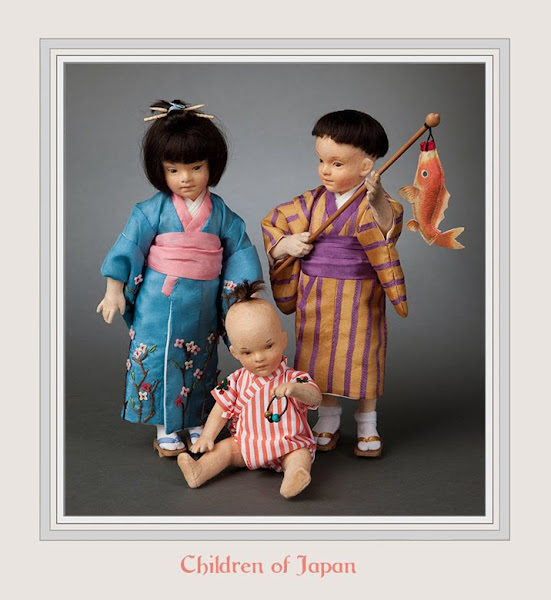

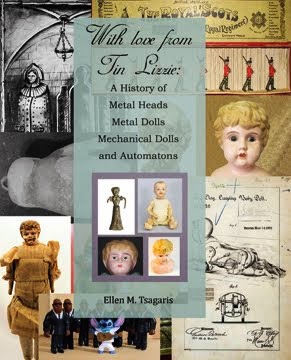
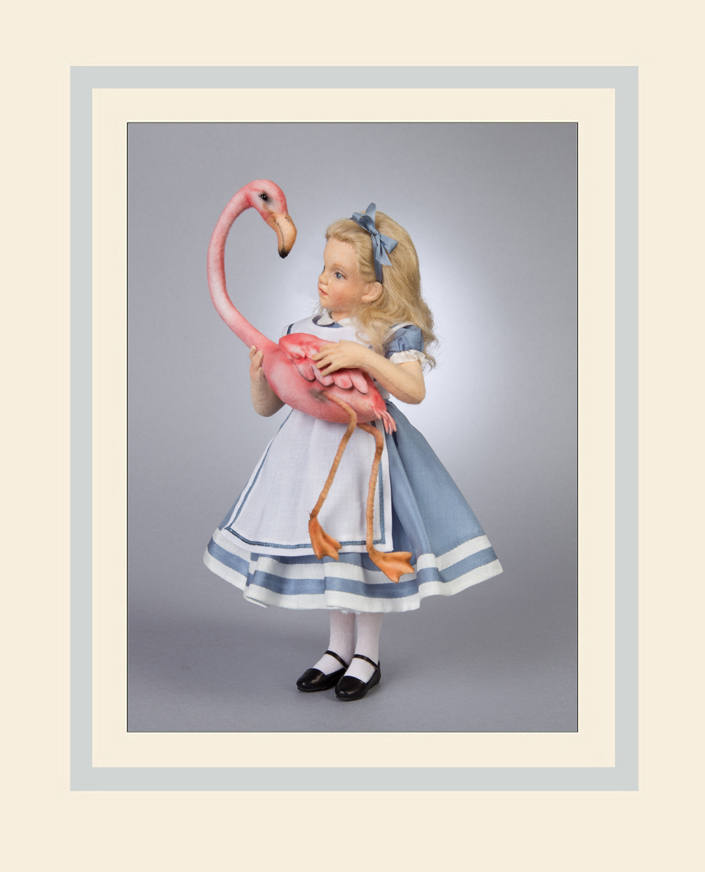


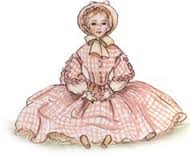


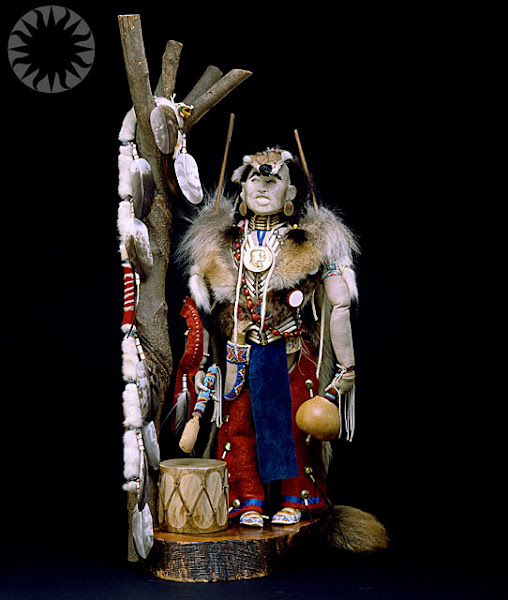
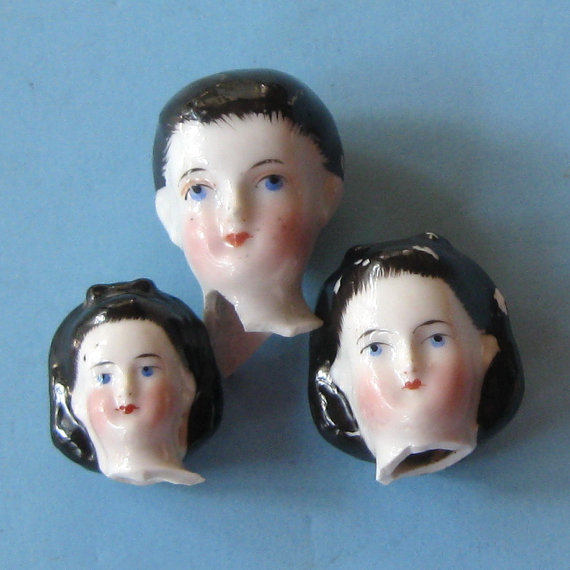
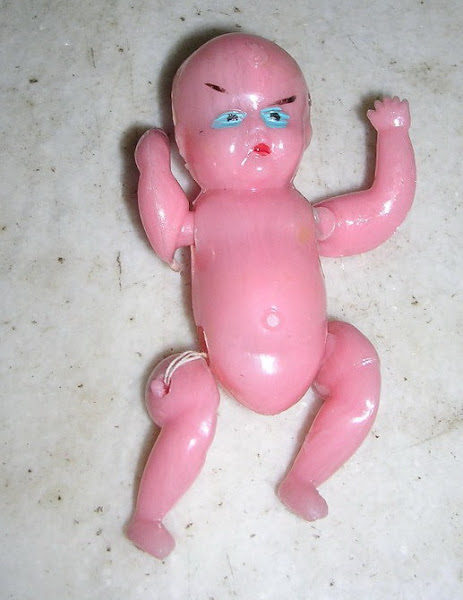
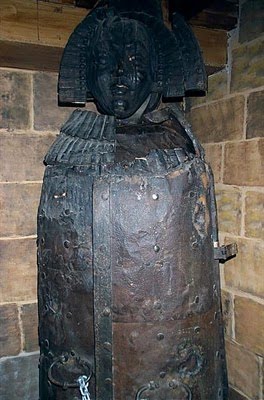

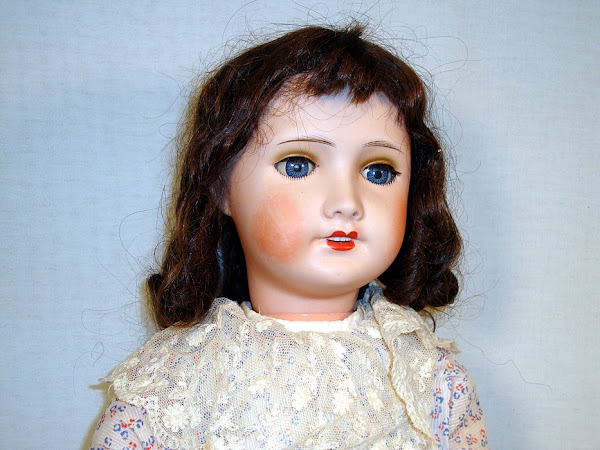



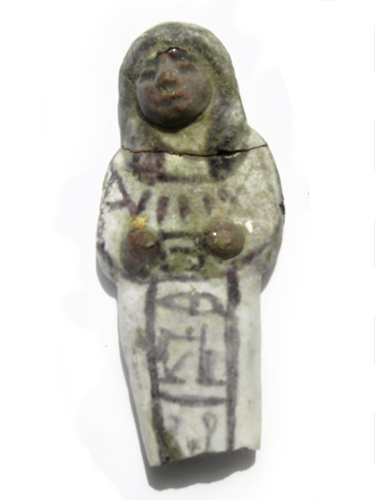
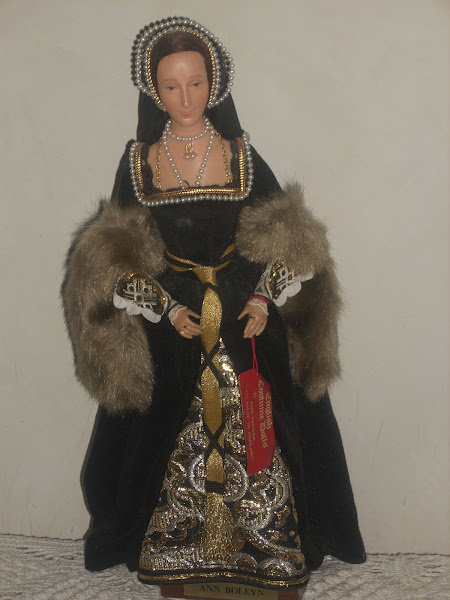





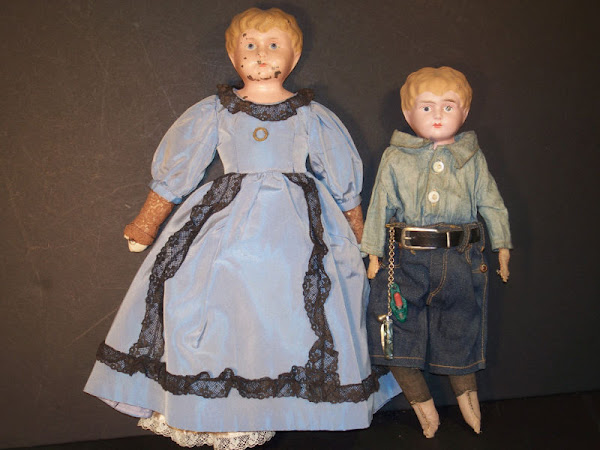


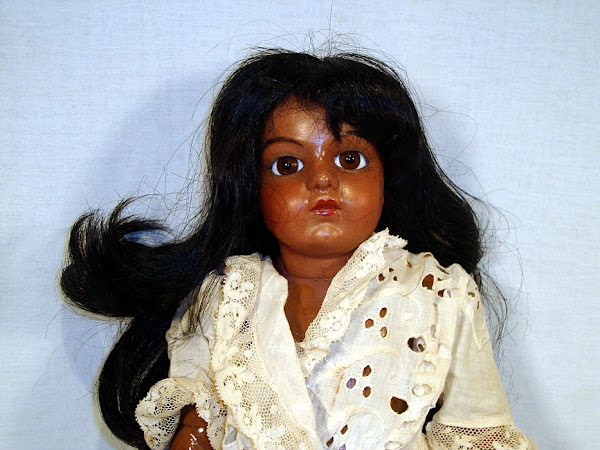
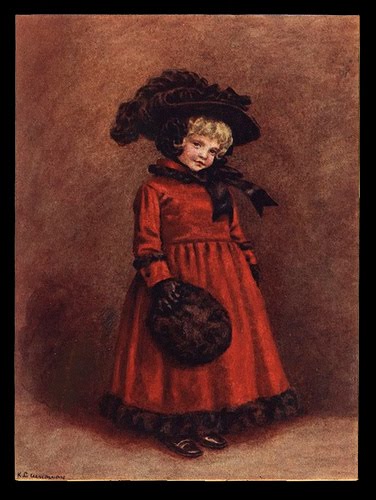

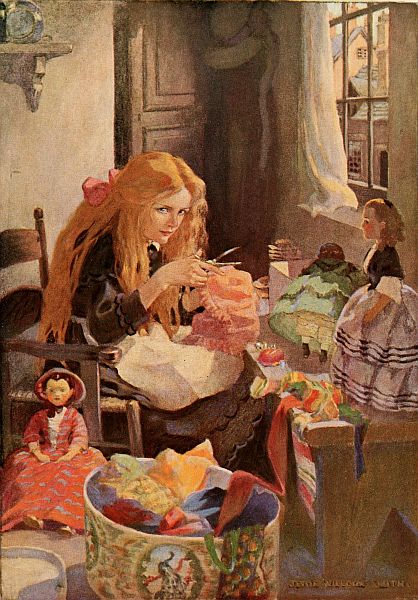


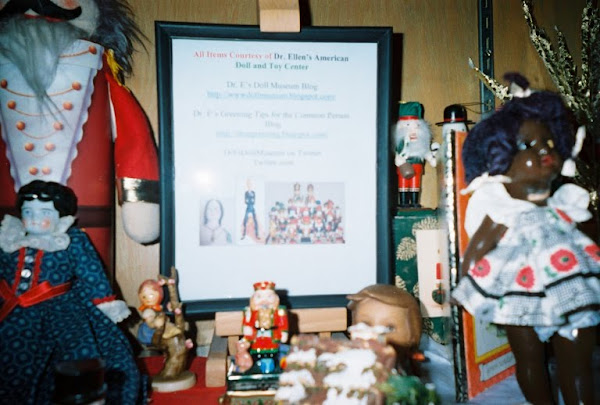






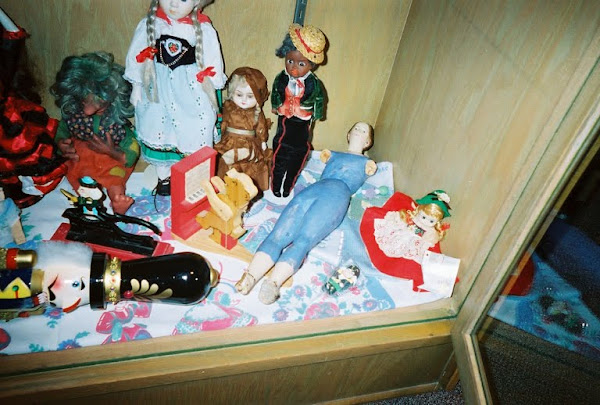
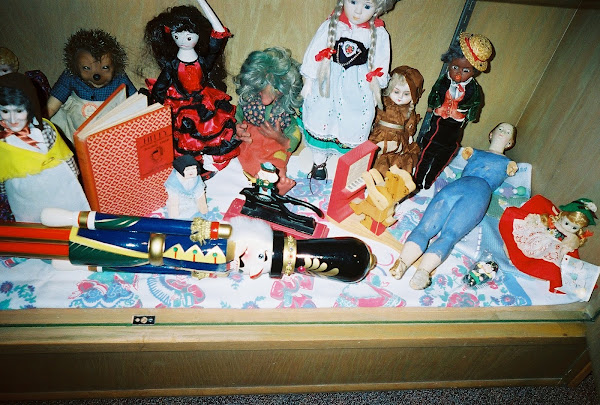
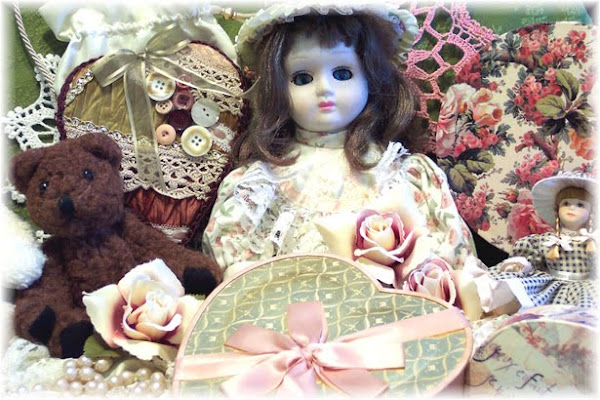
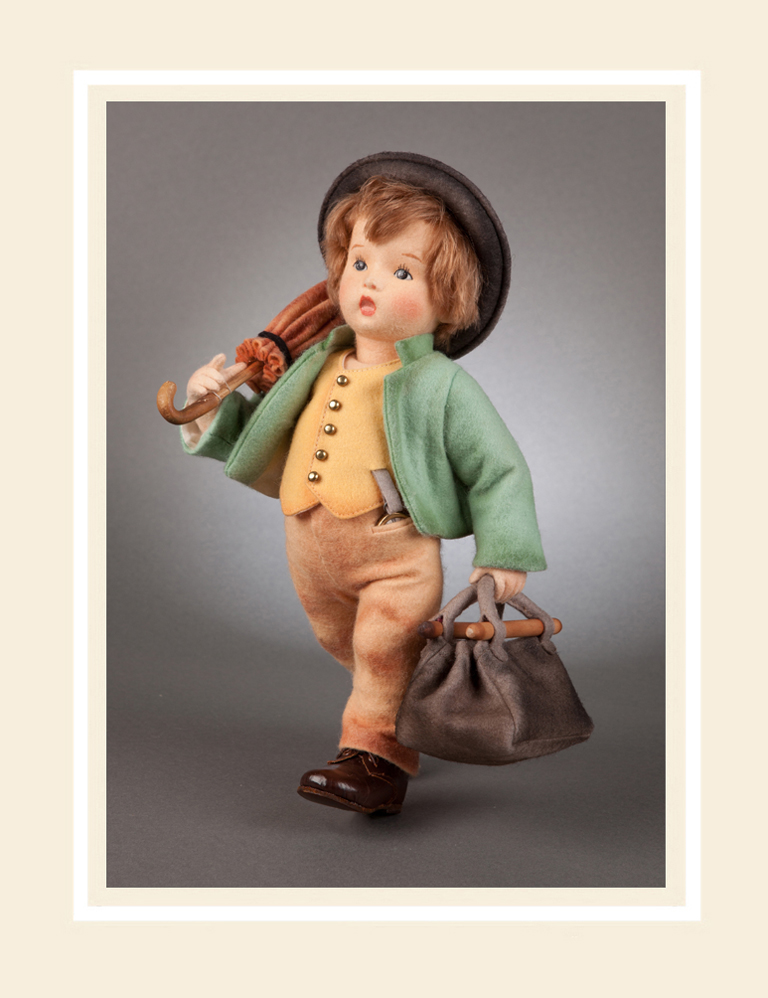

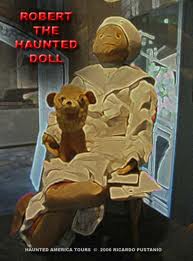

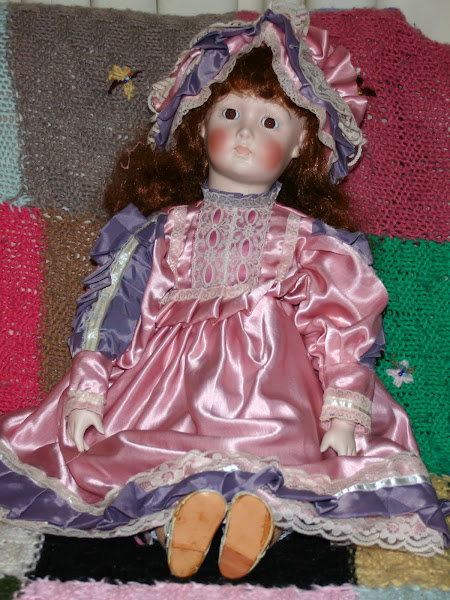
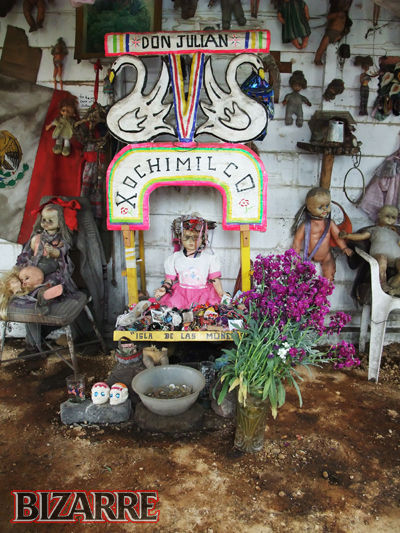
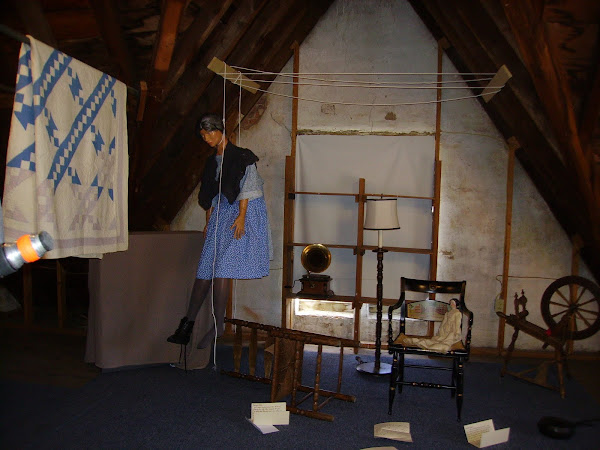
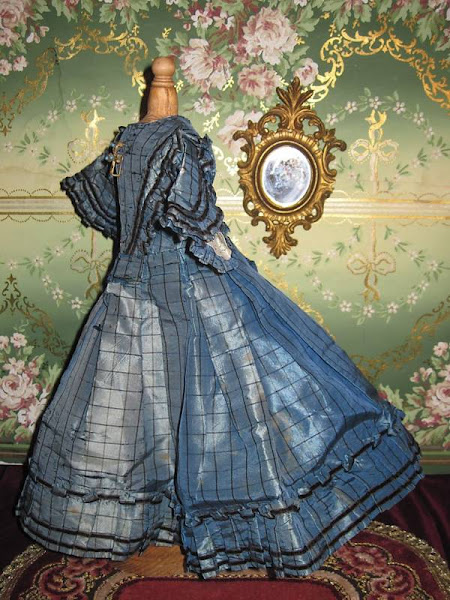wCWk~%24(KGrHqV,!h8Ew5GsnS3dBMUy3MzVPg~~_3.jpg)


